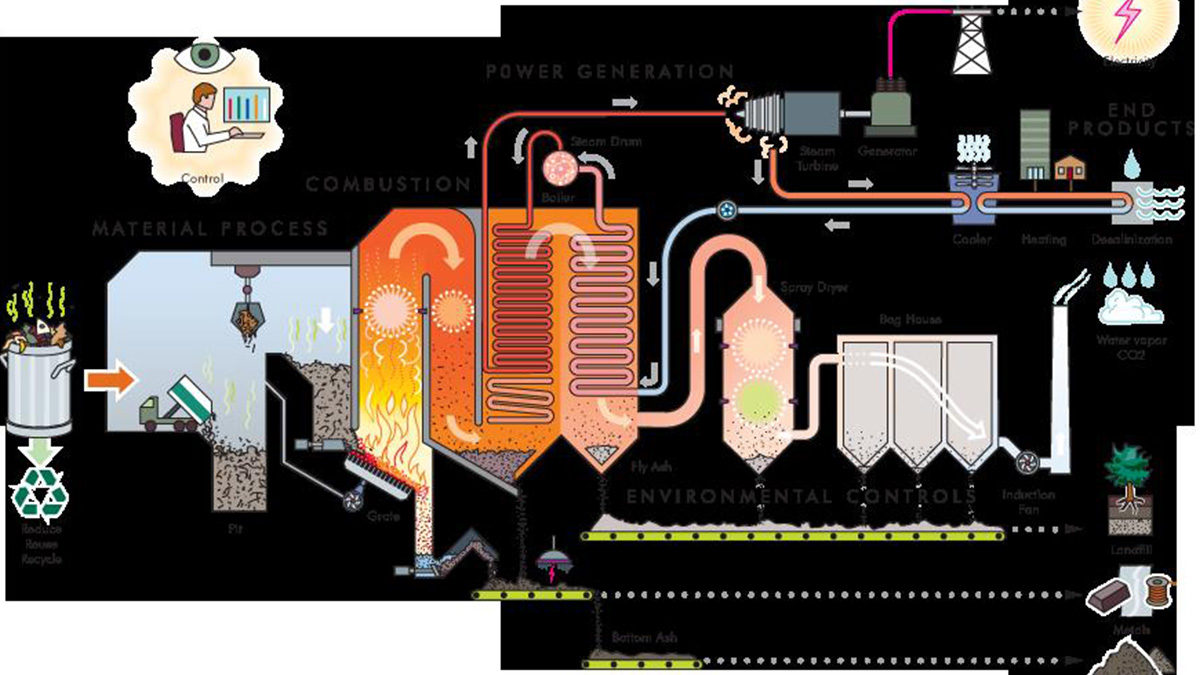Focus on renewable energy
Japan’s waste to energy experience

Global April 01, 2019 - By
A viable waste management and renewable opportunity
Addressing proper waste-disposal needs is a huge challenge worldwide, which includes surpassing landfill capacity and dealing with negative health and environmental impacts when waste is not properly managed. According to a World Bank report in 2018, by 2050, the earth is expected to generate 3.40 billion tons of municipal waste annually, increasing an eye-catching 68% from the 2.02 billion tons generated in 2018.
Waste Management in Japan
Japan has experienced the same waste-management issues now facing developing countries. The country used to lack the infrastructure of proper collecting, sorting, transporting and treating waste. Between 1945 and 1950, waste generation increased drastically due to robust economic and population growth after World War II. Yet due to the lack of waste-management infrastructure, waste began to pile up in open areas, rivers, and in the ocean, which resulted in negative health and environmental impacts. This problem prompted the country to take immediate actions to cope with the waste-management pitfalls that had evolved over the years. The country exerted efforts to elevate the environmental and health conditions, which were the turning point in Japan’s environmental policy.
Currently, Japan is a global leader in the area of waste management. Environmental regulations there are governed nationally by the Ministry of Environment and on a state level. Each Japanese prefecture runs its own environmental regulations, while complying with national environmental regulations at the same time. The Clean Authority of Tokyo is the waste-management governor of 23 municipalities in Tokyo Prefecture. Tokyo classifies waste into combustible and incombustible categories to ensure that all waste types are managed efficiently. Combustible waste is directly transferred to Waste to Energy (WtE) plants, while the incombustible waste is transferred to waste-processing centers for reuse and recycle applications.
An Overview of WtE
Meeting the rising demand for energy worldwide constitutes a big challenge for all countries, and waste can play an important role here. With a high content of British Thermal Units (BTU), waste can be a reliable renewable energy source through WtE, an environmentally-friendly process of generating energy from burning waste. Burning municipal solid waste can reduce the volume of waste by about 87 percent.
Energy can be created in the form of heat or electricity, based on either producing combustible gases (such as methane, hydrogen and carbon monoxide) or heating water to generate steam to run a turbine.
At an initial stage, waste enters an enclosed receiving area, where it is thoroughly mixed in preparation for combustion. The mixed waste then enters a combustion chamber at a very high temperature to assure that waste burns completely. Different available technologies other than combustion can be used such as gasification. The heat that results from the combustion chamber will boil water into steam to drive a turbine to generate energy in the form of electricity.
Following strict controls is crucial for the WtE, as the entire process must be managed to optimize combustion’s efficiency and environmental factors.
Besides generating power, the WtE process can reduce waste volume by up to 90 percent, where some of the remaining ash, deemed not hazardous, can be used for other applications.
Japan WtE Facilities Site Visits
Developed countries are adopting this trend of converting waste into energy, Japan especially. In Japan alone there are more than 700 WtE plants. Converting WtE in Japan is technologically and environmentally advanced, as the country is deploying different WtE technologies in its facilities, mainly incineration and gasification technologies.
Representatives from Aramco organizations and the Saudi government have visited WtE facilities to witness onsite Japan’s experience. The tour included visits to different types of facilities.
Promoting WtE to divert Aramco-generated waste from landfills to usable energy where feasible, is something the Company is taking very seriously.
WtE in Saudi Arabia
Every year, Saudi Arabia generates 15 million tons of waste streams such as municipal solid waste (MSW), used tires, sewage sludge, and waste oil, among other sources. These quantities could make meaningful contributions to the Kingdom’s energy resources, especially as attention is paid to proper waste-management continues to increase in the Kingdom. Proper waste management now forms part of Saudi Arabia’s 2030 vision. The country is targeting increasing the efficiency of waste management through establishing comprehensive recycling projects, reducing all types of pollution, and diverting waste into a useful source of energy. Aramco will continue to study the feasibility of the WtE opportunity to achieve environmental sustainability, by increasing the efficiency of waste management.



